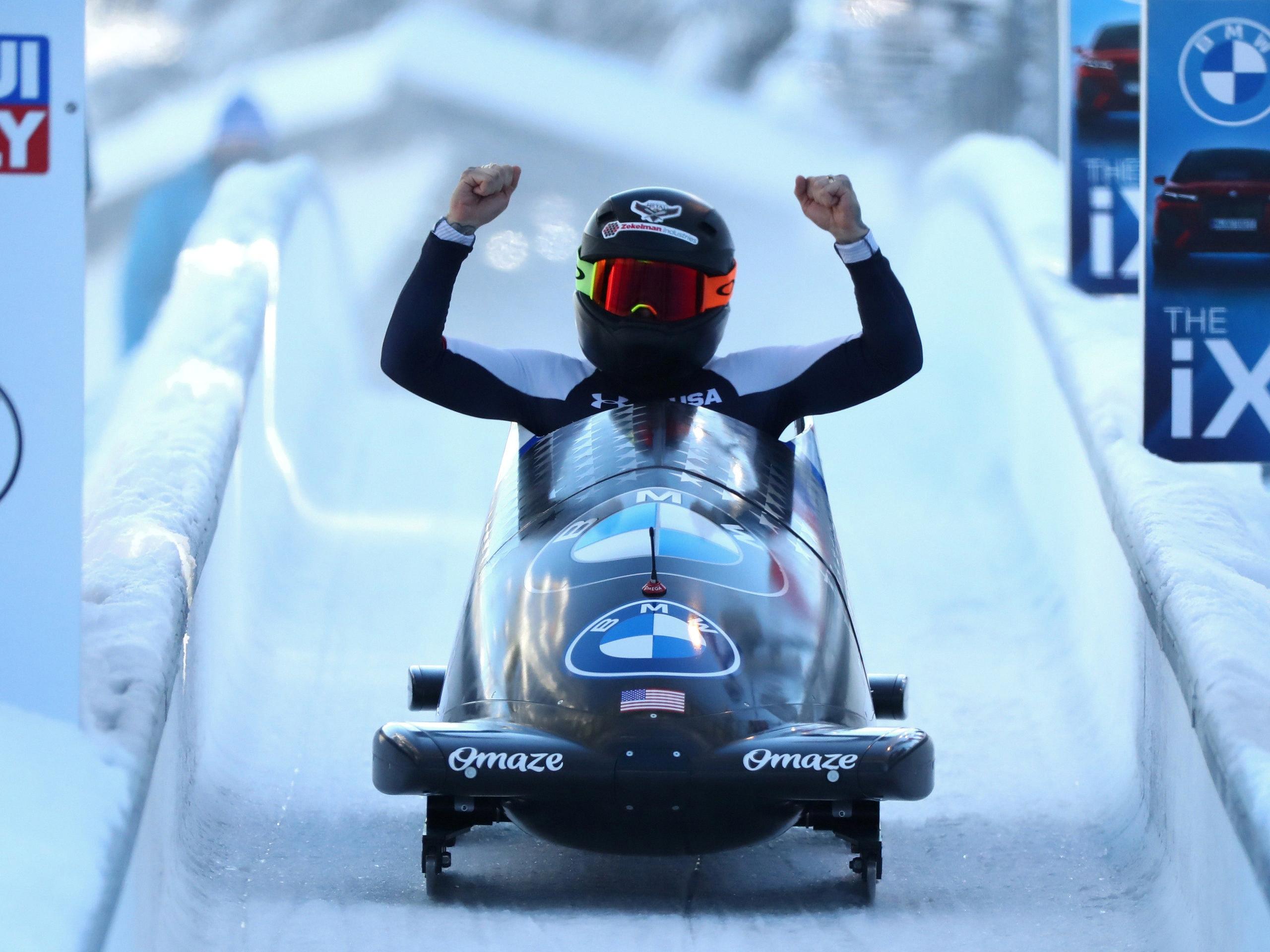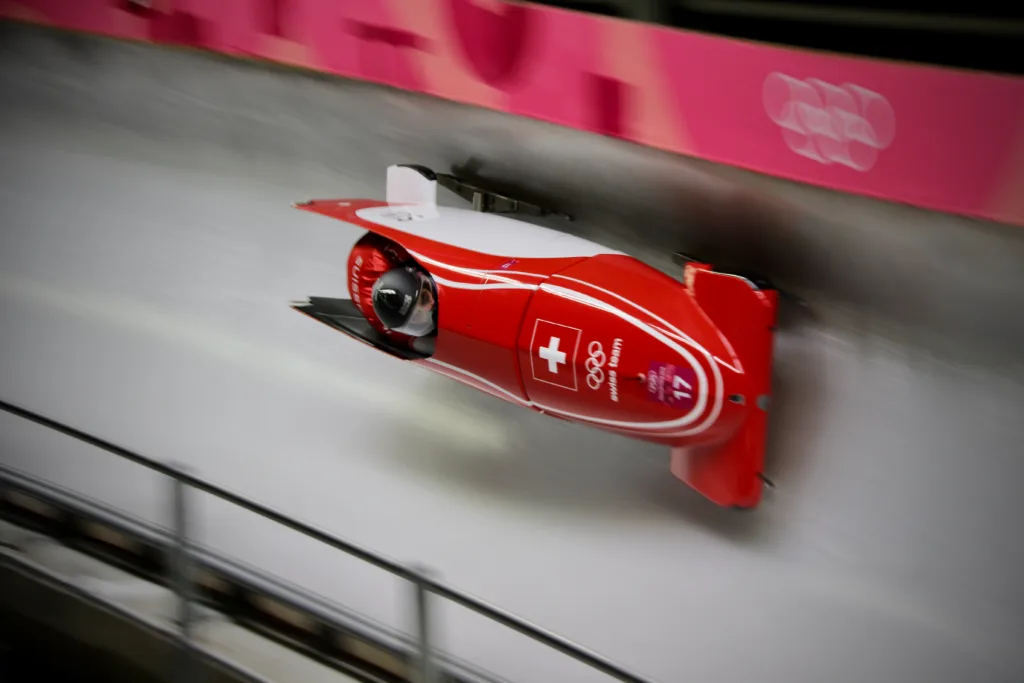The world of winter sports is full of thrills and excitement, and few events embody that more than bobsledding. This high-speed sport involves teams of athletes hurtling down icy tracks on sleds at breakneck speeds, racing against the clock and each other to cross the finish line first.
One of the most impressive aspects of bobsledding is the incredible speeds that can be reached on the track. According to the International Bobsleigh and Skeleton Federation, a four-man bobsled can travel at up to 93 miles per hour, while a monobob can reach speeds of 75 miles per hour. This is an astonishing feat, especially considering the icy terrain and sharp turns that must be navigated along the way.
But just how do bobsleds reach such incredible speeds? The answer lies in the power of gravity. Bobsleds start at a high point on the track and then fall to a lower height, allowing gravity to accelerate the sled and its riders to faster and faster speeds. This is why the steeper and longer the track, the faster the sled can go.
Of course, there are other factors that come into play as well. The design of the sled itself can have a big impact on its speed and performance. Sleds are typically made from lightweight materials like carbon fiber and aluminum, and are designed to be as aerodynamic as possible. This helps them to cut through the air more efficiently, reducing drag and allowing them to reach higher speeds.
The skill and experience of the bobsled team is also crucial. The team must work together seamlessly, each member contributing their own unique strengths and abilities to ensure that the sled stays on track and maintains its speed. Small mistakes or miscommunications can have a big impact on the sled’s performance, and even a fraction of a second can make the difference between winning and losing.
Bobsledding is a thrilling and impressive sport that showcases the incredible capabilities of human athletes and the power of gravity. With speeds reaching up to 93 miles per hour, it’s a true test of skill, teamwork, and courage, and an event that never fails to captivate audiences aroud the world.
Average Speed of Two-Man Bobsleds
Two-man bobsleds are one of the fastest Olympic winter sports events. The sleds can reach speeds of up to 90 mph (145 kph) during a run. The speed largely depends on the slope, the length of the track, and the angle of the turns. The sleds’ velocity builds up quickly due to the steep slope of the track, and the athletes’ weight and push-off power.
During a bobsled run, the athletes use teir body weight to navigate the turns and maintain the sled’s speed. The pilot of the sled steers the sled using subtle shifts in their body weight, while the brakeman at the back helps to control the sled’s speed by applying the brakes at the end of the run.
It’s worth noting that the speed of the sled also depends on the type of sled used. Modern bobsleds are made of lightweight materials like carbon fiber and are designed to be aerodynamic, which helps to increase their speed.
Two-man bobsleds can reach speeds of up to 90 mph (145 kph) during a run, and the speed is influenced by the slope, length of the track, angle of the turns, sled design, and athletes’ weight and push-off power.

Source: self.com
The Fastest Speed Achieved on a Bobsled
The International Bobsled and Skeleton Federation has stated that bobsleds can attain a maximum speed of 93.2 mph. This speed is achieved due to the streamlined design of the sled and the steepness of the track. As the sled gains momentum, it becomes increasingly difficult to control, making the sport of bobsledding both exhilarating and dangerous. The acceleration that bobsledders experience when racing down the track is comparable to that of a high-performance sports car. The speed and force of the sled make it a challenging sport that requires incredible skill, coordination, and bravery from the athletes.
Average Speed of Single Man Bobsleds
Single man bobsleds, also known as monobobs, can reach impressive speeds while traversing an icy track. According to the International Bobsleigh and Skeleton Federation, the maximum speed for a monobob is approximately 75 miles per hour. This is slightly slower than the four-man bobsled, which can reach speeds of up to 93 miles per hour.
It’s important to note that bobsled speed can vary depending on various factors such as the athlete’s technique, the track’s condition, and weather conditions. Regardless, monobobs are designed to provide a thrilling and challenging experience for the athletes and spectators alike.
In comparison to other winter sports, bobsledding is considered one of the fastest, with speeds that can rival those of downhill skiing and snowboarding. The high speeds and the twists and turns of the track make bobsledding a thrilling and exciting sport to watch and participate in.
Monobobs can travel at speeds of up to 75 miles per hour, making bobsledding one of the fastest and most exhilarating winter sports.
Speed of Bobsleds in the Winter Olympics
Bobsleds are one of the most thrilling events in the Winter Olympics, with athletes racing down icy tracks at incredible speeds. The speed of a bobsled can vary depending on a number of factors, including the weight of the sled, the skill of the athletes, and the design of the track.
On average, bobsleds in the Winter Olympics can reach speeds of up to 80 miles per hour (130 km/h). This is incredibly fast, and gives athletes only a few seconds to react to the twists and turns of the track.
The speed of a bobsled is generated by a combination of factors. First, the athletes use their strength and skill to push the sled as fast as possile at the start of the race. Then, the sled’s design and weight distribution help it to gain speed as it hurtles down the track. the athletes must use their skill and precision to steer the sled through the twists and turns of the track, maintaining their speed and avoiding crashes.
It’s important to note that the top speed of a bobsled can vary depending on the track and the conditions on race day. Some tracks may be designed to be faster or slower than others, and weather conditions like wind and snow can also impact the speed of the sled.
Bobsleds in the Winter Olympics can reach speeds of up to 80 miles per hour (130 km/h) on average. This speed is generated by a combination of factors, including the strength and skill of the athletes, the design of the sled, and the conditions on the track.

Conclusion
Bobsleds are an exciting sport that showcases the power of gravity and the skill of athletes. With speeds reaching up to 93.2 mph, these sleds navigate icy tracks with twists and turns that require precision and bravery. The bobsled, luge, and skeleton events at the Beijing Winter Olympics are sure to captivate audiences worldwide, as fans marvel at the sheer speed and agility of these athletes. Whether you’re a seasoned sports enthusiast or a casual viewer, the bobsled races are a spectacle not to be missed. So, buckle up and get ready for the ride of a lifetime!
